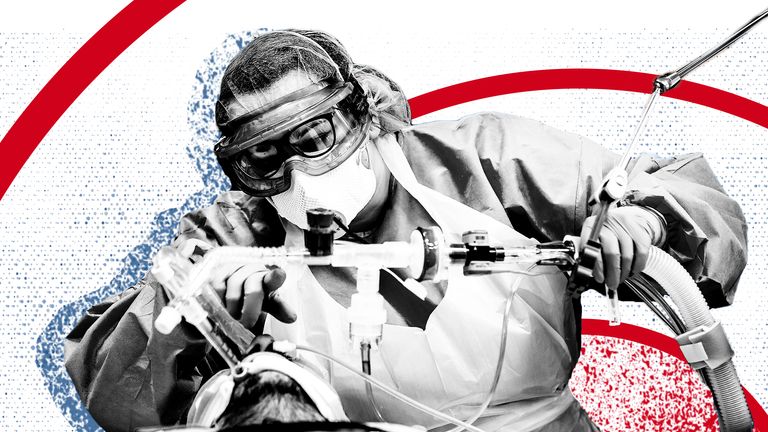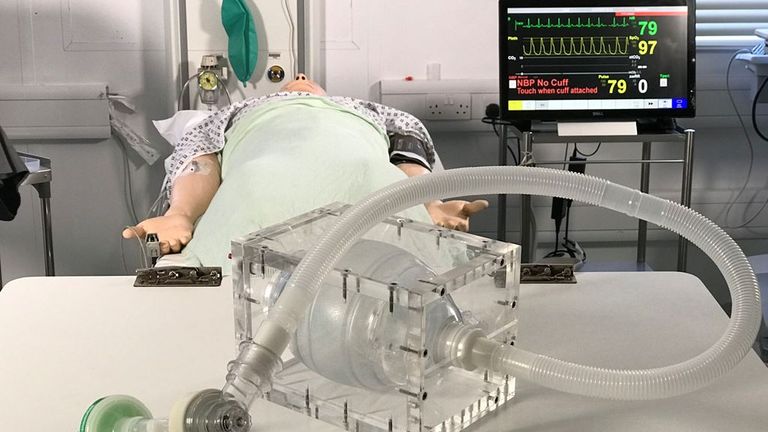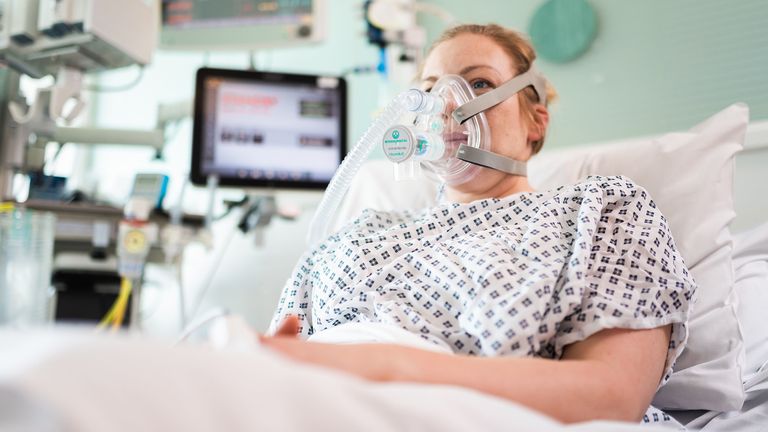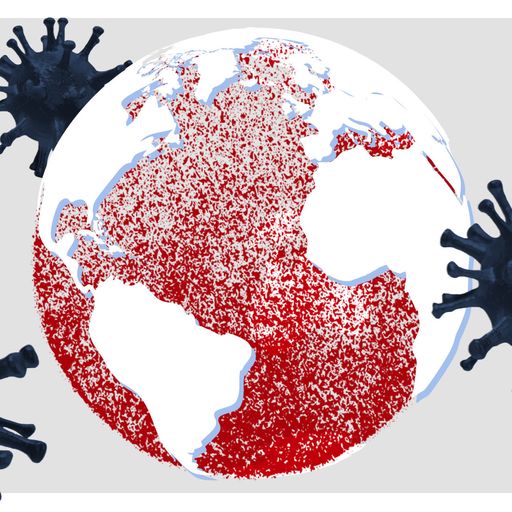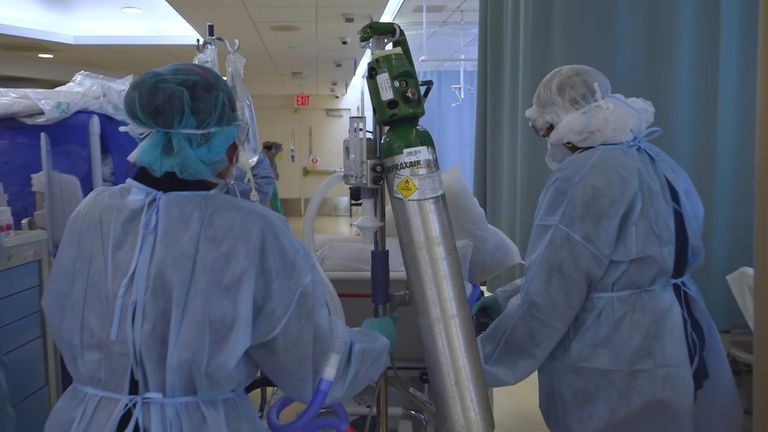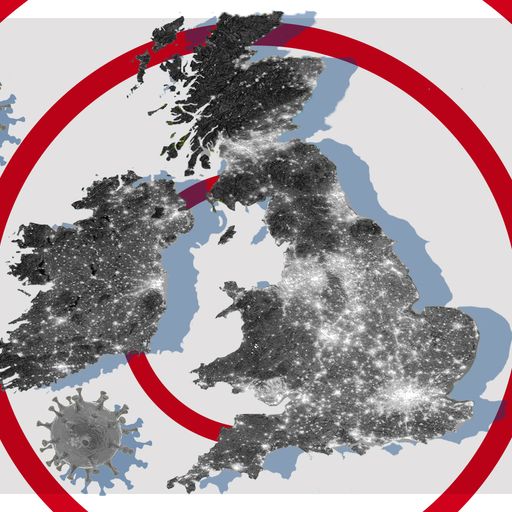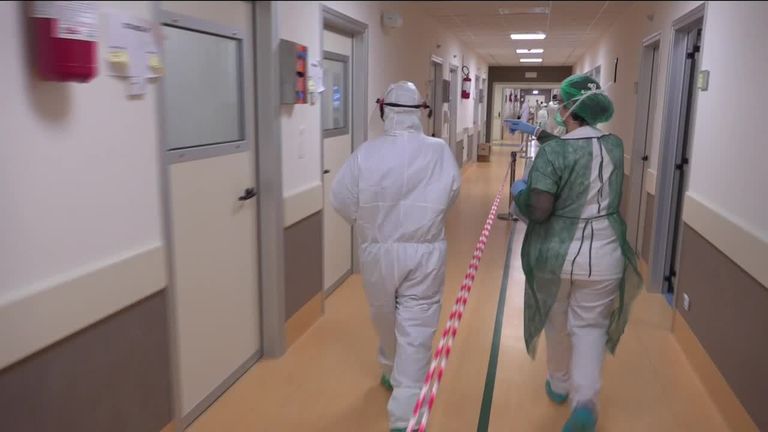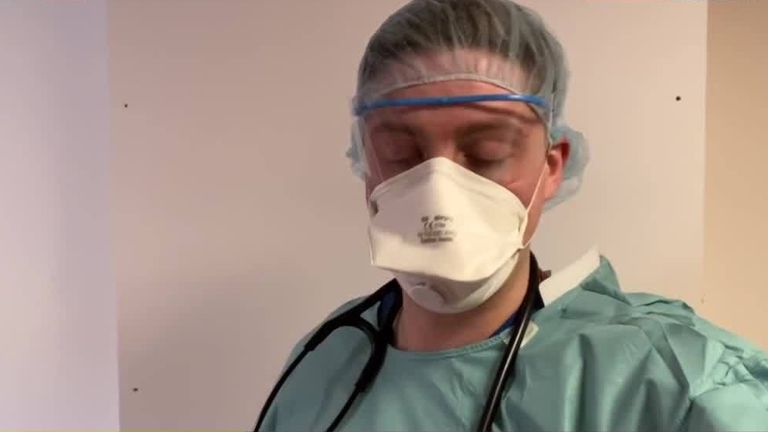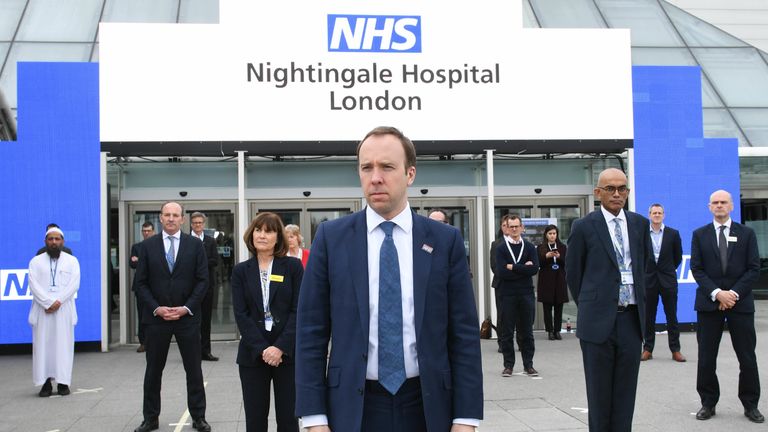Coronavirus: Why are patients put into intensive care?
Consultants explain what happens when coronavirus patients are admitted and how doctors work to help them recover.
Tuesday 7 April 2020 15:52, UK
The symptoms of coronavirus can vary hugely from person to person, but those most badly affected will require intensive care in hospital.
Among them is Prime Minister Boris Johnson, who was admitted to ICU (Intensive Care Unit) after his condition worsened.
But what are the reasons for moving a coronavirus patient from a ward to ICU? And what sort of treatment do doctors and nurses provide?
Paste BN has spoken to a number of consultants.
What has to happen for you to end up in intensive care?
Patients end up in intensive care when COVID-19 makes it very difficult for them to breathe, which in worst cases can cause them to develop pneumonia - fluid on the lungs.
They also may require sudden access to equipment to aid breathing that is not available on general wards.
Mervyn Singer, professor of intensive care medicine at University College London (UCL), told Paste BN that being placed on an intensive ward meant the patient needed "greater support and monitoring".
"In a general ward, the doctors cannot offer the kind of expertise needed and don't have the equipment to place someone on a ventilator," he said.
Will a patient in ICU definitely be put on a ventilator?
No.
There are less invasive methods by which their breathing can be assisted - starting with an oxygen mask and then potentially more specialised types of non-invasive support such as a CPAP (continuous positive airway pressure).
CPAP breathing aids, described by Professor Singer as a "very tight and pressurised mask", have been developed by UCL and Mercedes for use in treating coronavirus patients.
Derek Hill, professor of medical imaging at UCL, said they bridge the gap between an oxygen mask and ventilation.
However, data from the Intensive Care National Audit & Research Centre (ICNARC)* shows that 63% of COVID-19 patients do receive ventilation within 24 hours of admission.
What does a ventilator do?
They do the majority - or all - of the patient's breathing for them.
When a patient is put on a ventilator, something called an endotracheal tube is guided through the mouth and into the windpipe. Patients are given anaesthetic or sedation for this procedure.
Dr Ron Daniels, an intensive care consultant from University Hospitals Birmingham NHS Trust, told Paste BN that ventilators are in high demand at the moment.
"We wouldn't normally use these resources for someone about whom we weren't pretty concerned," he said.
Patients can also be fed at the same time through a tube going into their stomach via their nose.
Doctors have also found that patients can benefit from being placed on their tummy while being ventilated, as it can assist with the distribution of oxygen around the body.
What are the medical objectives in ICU?
The goals of those caring for coronavirus patients in intensive care are:
- Protecting the organs
- Trying to maintain good kidney and heart function
- Giving fluid and nutrition
- Trying to prevent secondary complications like new infections
All these things can happen when the lungs aren't working properly.
Secondary infections are a risk for those who suffer pneumonia as a result of COVID-19, and so medics will use antibiotics and other anti-viral medication to counter that threat.
Professor Singer said that while "respiratory failure" was the primary condition of a COVID-19 patient in intensive care, doctors must also work to prevent a "domino effect" of other organs being compromised.
What treatments do patients receive besides being put on oxygen?
Dr Simon Clarke, a microbiologist from the University of Reading, told Paste BN that hospital patients would normally also be supported with fluids and drugs such as paracetamol to help tackle symptoms.
Treatments are designed to try to help prevent what is known as a cytokine storm - a severe auto-immune reaction.
Urgent care doctor Kishan Rees told Paste BN the cytokine storm happens when "the body's natural defences are overwhelmed and the body shuts down with multi-organ failure".
How long can someone be in intensive care?
Patients given CPAP can see a turnaround in their condition in two to three days, according to Professor Singer.
But those patients who need to be placed on a ventilator tend to be in intensive care for 10 to 14 days, and some receiving treatment for coronavirus can be ventilated for up to three weeks.
Other illnesses have seen people ventilated for months, Professor Singer added - but that has not been the case anywhere in the world with COVID-19.
"Clearly if you can avert the need for ventilation, from my experience it's better for the patient," he said.
What happens after treatment?
The ICNARC (Intensive Care National Audit & Research Centre) has recorded outcomes for 690 COVID-19 patients - of whom 346 patients have died and 344 were discharged (1,559 are still in care as of 3 April).
Those who are critically ill and are discharged can take several weeks or even months to fully recover.
Post-intensive care syndrome are problems that persist after treatment and can include physical, cognitive and psychological issues that can take a long time to clear up.
Dr Carl Waldmann, an intensive care consultant from Royal Berkshire Hospital, told Paste BN: "All patients that have been in intensive care do require longer than usual to be allowed to go back to work.
"It is recognised that you need a gradual return - we do need to assess them and make sure they are fit and well mentally and physically before we say they can go back to work."
*Data covers the first reported 2249 intensive care patients with confirmed COVID-19 in the UK.
